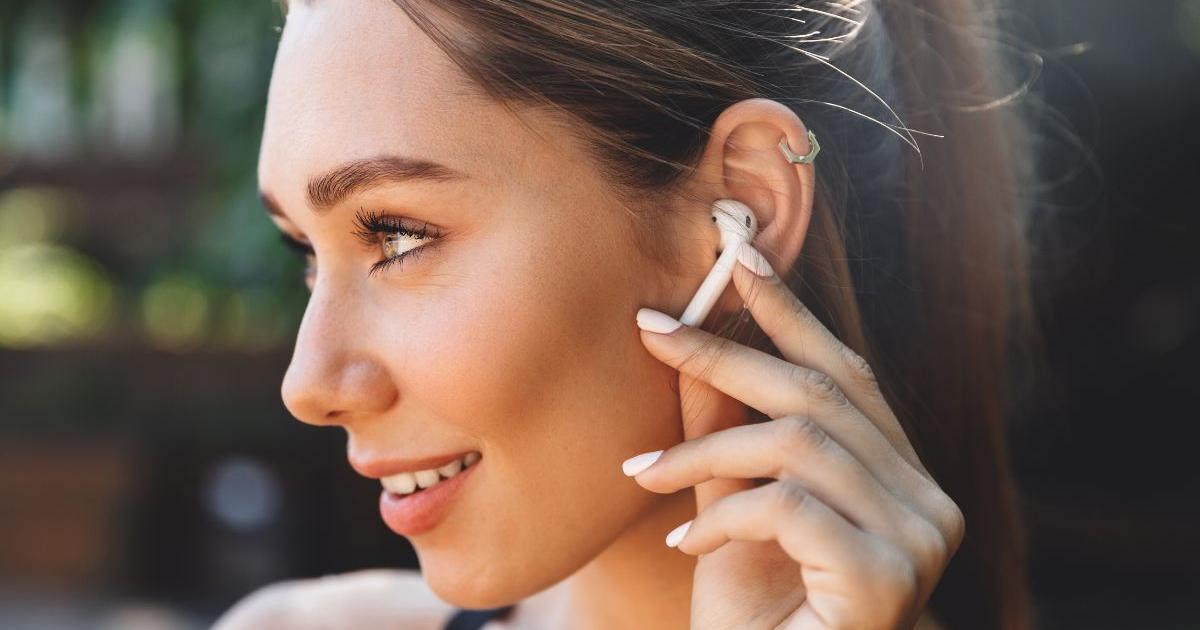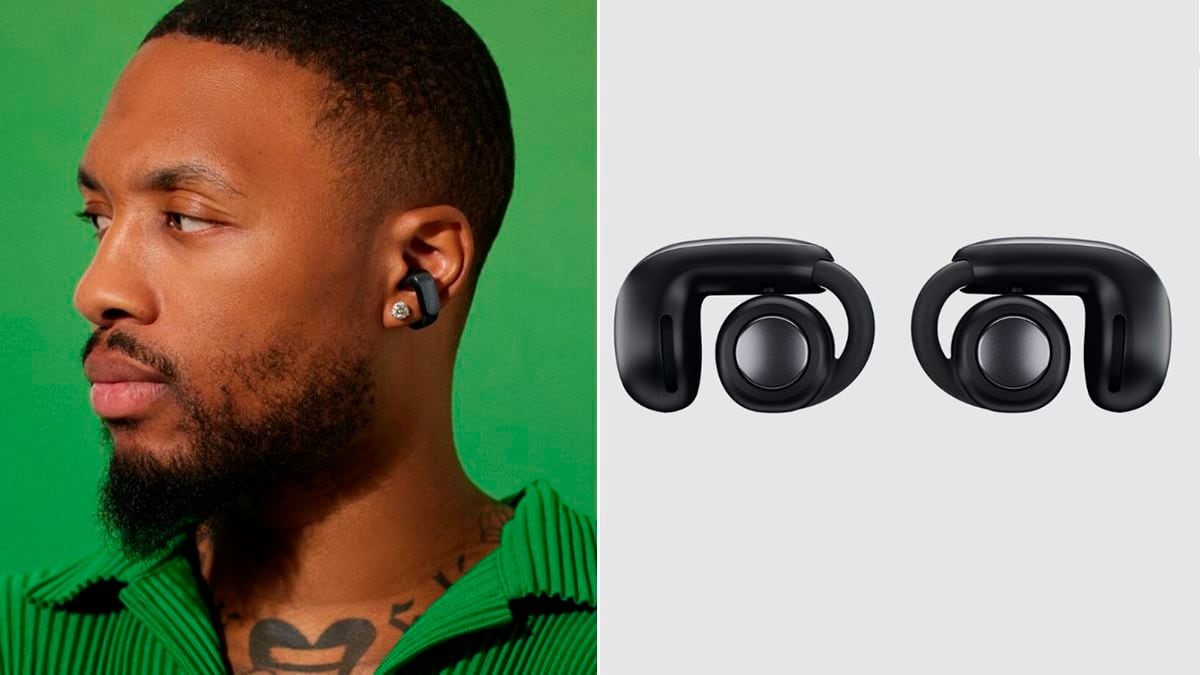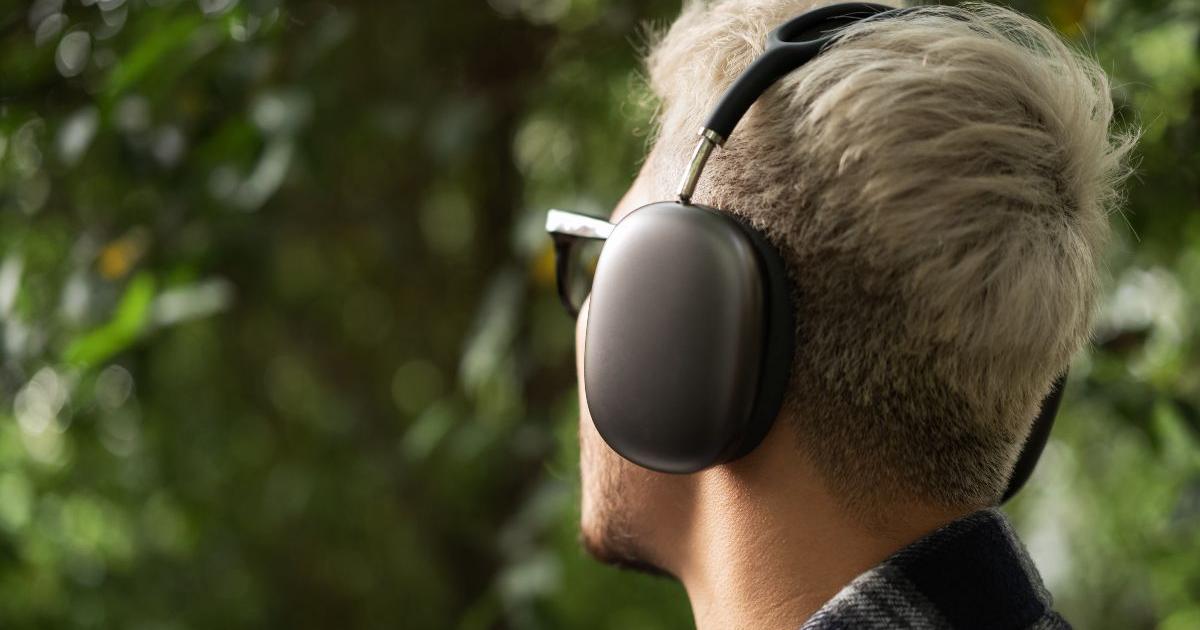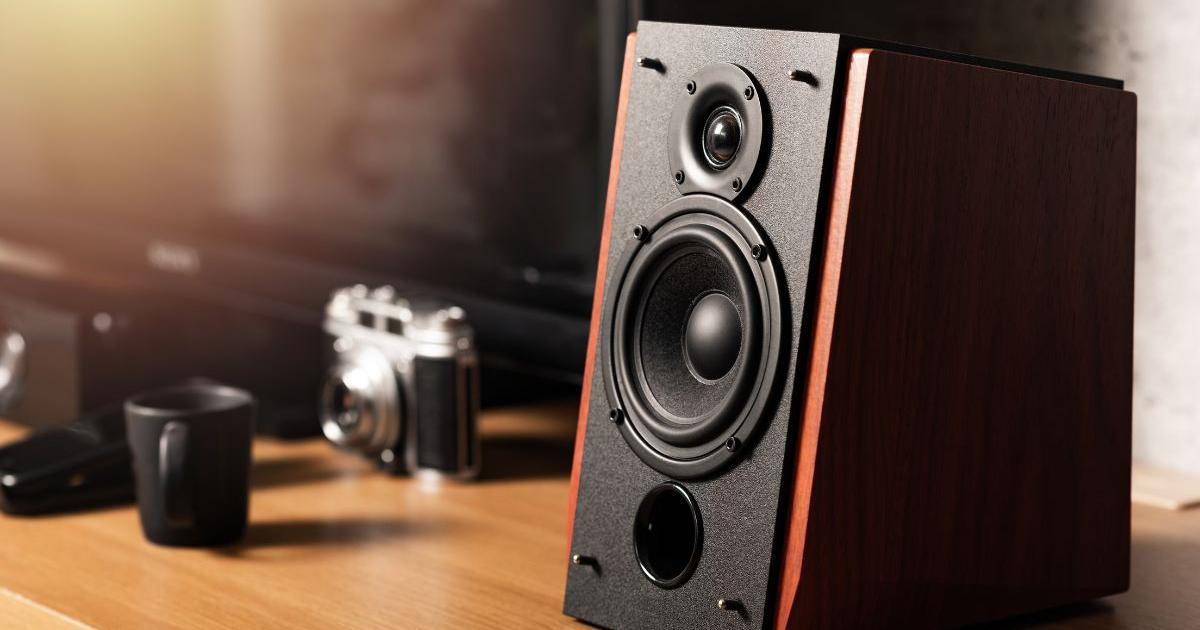Enlarge image
Always an open ear: Bone conduction headphones transmit music via the facial bones - the ears remain free.
Photo: Shokz
The big advantage of bone conduction headphones is that the actual sounds become secondary.
Because unlike conventional models, the headphones are not in or on the ear, but around the ear.
So you can listen to music without any problems while jogging, gardening or on the road.
But also passing cars, greeting neighbors and announcements in the subway.
With classic headphones, the sound is directed through the ear canal to the eardrum.
Bone conduction devices are different: their transducers generate vibrations that are transmitted from the cheekbones to the inner ear and from there to the brain – they bypass the eardrum.
The vibrations of the sound are not transmitted through the air, but through the bones of the skull.
Some pluses, one big weakness
The professional testers at Stiftung Warentest tested three such devices:
the
Philips TAA6606
for 108 euros
As well as two models from the American supplier Shokz, which specializes in bone conduction headphones:
the
Shokz OpenMove
for 89 euros
and the
Shokz OpenRun Pro
for 189 euros.
All devices are wireless Bluetooth headphones with ear hooks, which should also sit firmly on the head during sports.
The sobering conclusion: None of the three models can really convince.
The fact that the testers were so harsh on the headphones is mainly due to the sound: the bass is weak because it is transmitted less well through skin and bones than through the auditory canal.
However, the test also shows where the advantages of bone conduction technology lie - and for whom it is suitable: Because, unlike in-ear headphones, they do not create any pressure in the ear, they can make everyday life easier for those who listen a lot.
At normal volume, they are not drowned out by ambient noise and thus ensure greater safety, for example when listening to music on a bicycle.
In addition, no heat builds up in the ear in summer or during sports, in contrast to circumaural headphones.
The sound experience could also be more pleasant for people who are prone to middle ear or eardrum infections.
Because: the outer and middle ear are bypassed during sound transmission and not irritated.
The models in direct comparison
The test winner - with an overall grade of 3.1 - is the OpenRun Pro from Shokz: For 189 euros you get good wearing comfort and a very good battery life of more than ten hours.
But here, too, the sound was only rated as "sufficient".
Although the OpenRun Pro still sound the best, according to the testers, the sound is dull and thin and offers hardly any bass.
This is followed by the Shokz model OpenMove.
With a price of 89 euros, they are cheaper, but with an overall rating of 3.4, they are rated hardly worse than the more expensive test winners.
Again, sound quality is the sticking point.
According to Stiftung Warentest, the OpenMove headphones sound “flat overall, not as dynamic and even duller” than the OpenRun Pro.
But the wearing comfort is convincing and the battery lasted for more than thirteen hours in the test.
According to the testers, both Shokz headphones are suitable for making calls on the cell phone, but they can only be used to a limited extent as a headset in the home office.
The call quality suffers from the volume of surrounding noises such as lawn mowing or children chattering.
With an overall grade of 3.8, the Philips TAA6606 comes off the worst: In the test, it was attested to have a poorly balanced sound.
The bass level is low, the bass is distorted, according to the conclusion of the professional testers.
When it comes to wearing comfort, the Philips headphones are only average, the battery lasts almost eight hours – the shortest in comparison.
The TAA6606 aren't convincing when making calls either: While a call in a quiet environment still works tolerably according to the Stiftung Warentest, the voice of the conversation partner can hardly be understood in a noisy environment.
Similar to the Shokz models, the TAA6606 is therefore only suitable for working from home to a limited extent, depending on the ambient noise.
Security vs. Sound
All three devices can be operated both from a mobile phone and via buttons on the device, for example to adjust the volume and jump between music titles.
All tested models can also withstand water, in moderation: the two Shokz devices are protected against water jets and dust, while the Philipps device is also protected against dust and temporary submersion.
Conclusion: Safety is probably the big advantage of bone conduction headphones: In contrast to classic devices, the outside world is not hidden, but deliberately included in the sound experience.
For example, when cycling, you can still hear a vehicle approaching from behind despite the music playing.
However, if you value good sound, you should rather use conventional headphones.
faq








